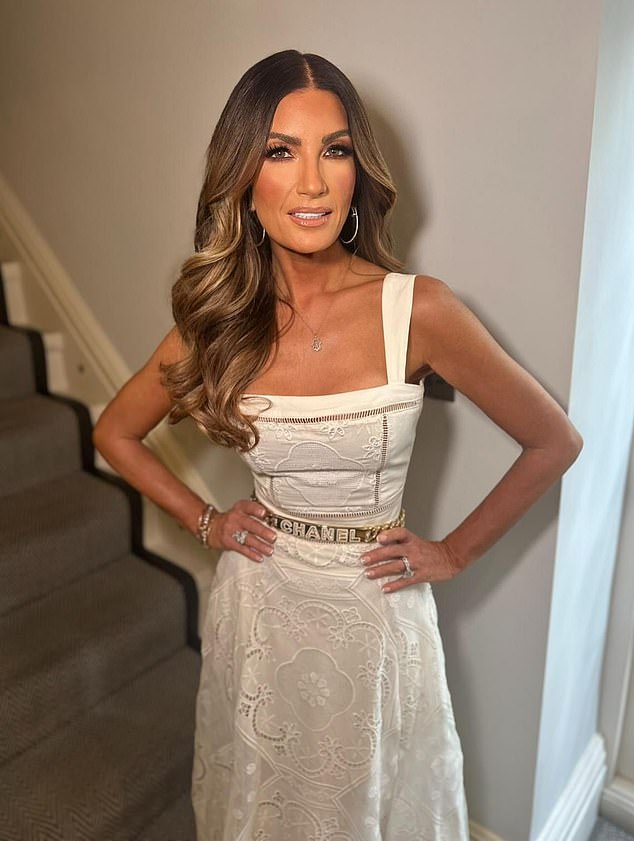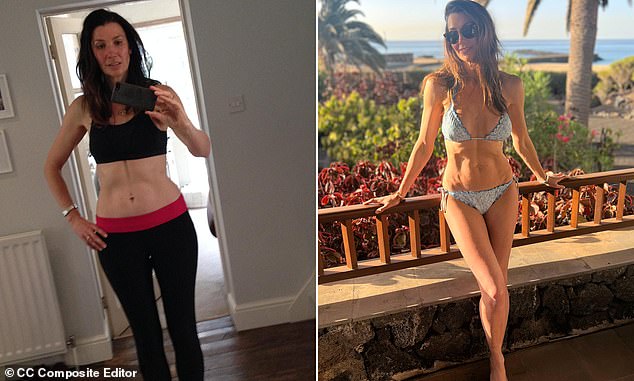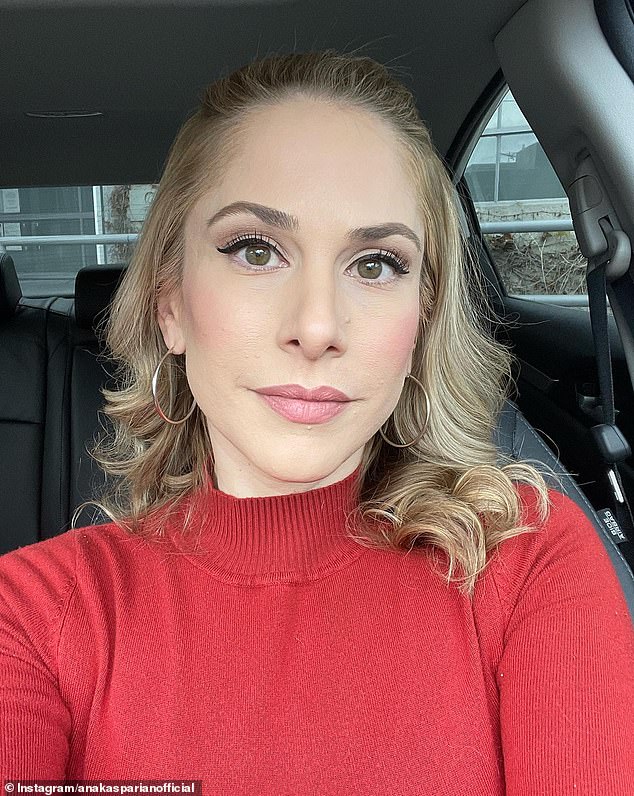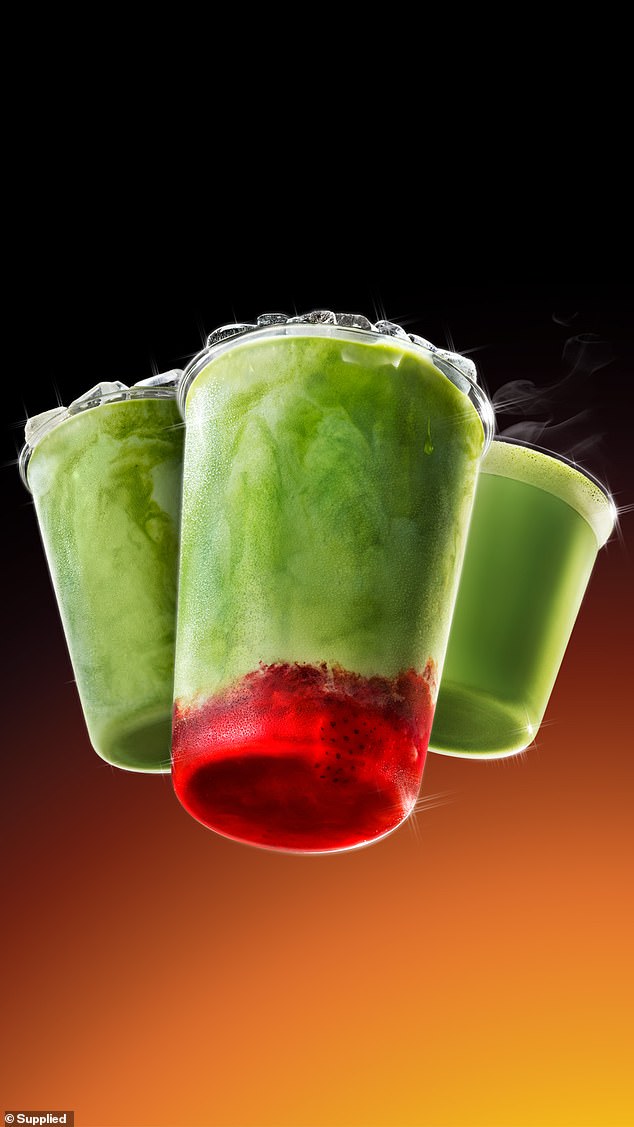Back in 2006, Nora Ephron published the famous essay ‘I Feel Bad About My Neck’, detailing her dissatisfaction with the skin there.
Her neck became the symbol of her ageing and 50-plus women everywhere admitted feeling angsty about that part of their body.
But 20 years on, there’s a new frontline in the war against Father Time – arms.
I’ve spent the summer watching women shield perfectly good limbs from others as if they were deranged. What is it about arms that so many find hard to bare, pun intended?
There is no end to the flaws this bit of our body can be prey to; bingo wings, crepey flesh, gnarled elbows, bumpy chicken skin (keratosis pilaris) and even armpit fat.
I’m astonished by how many of my female friends – intelligent, confident and not especially preoccupied about their appearance – hate their arms and, specifically, upper arms. Not breasts, stomachs, hips – arms.
‘I couldn’t possibly wear that dress’, almost all of my friends of 40 and upwards will say when looking at some gorgeous sleeveless item. Or, if I suggest a tank top or vest: ‘Are you crazy? I don’t do bare arms.’
It’s an attitude, almost a phobia, that I don’t understand. Although my own 60-something arms are far from smooth, toned, objects of desire, I have never felt compelled to hide them.

Karren Brady, 56, happily exposed her arms last week and admitted to having a skin-tightening treatment
Curiously, the only time I was remotely fussed about how they looked was as a teenager when there were so many parts of my body that didn’t, to my mind, come up to scratch. I remember placing my elbows in cut up lemon halves under the impression that this would both bleach and soften the skin there, which I was worried was darker and rougher than that of any of my friends.
And although at that point I had not a centimetre of cellulite, I would save up for some pricey French green gel which supposedly would rid my arms of the dimples I didn’t actually have.
As I have got older, my arms have become a part of my body I feel entirely comfortable about. I love going sleeveless and indeed as somebody who, at 5ft 4in is relatively short and a size 12, I have always thought it is more flattering to expose my arms than cover them in fabric, avoiding a bulky barrel shape, when the torso is covered completely.
During the 25 years I edited Vogue, every picture of me taken at some high-profile occasion I hosted or attended, shows me with bare arms.
A black floor-length sheath by Hardy Amies for an evening to host the then Prince Charles at a gala, a crimson bustier-topped John Galliano dress at the launch dinner for a Dior exhibition at the V&A, a sequinned Erdem cocktail dress for the 100th anniversary of Vogue celebration – all of them and countless more – sleeveless.
This is not because I am in any way proud of my arms but because I see nothing wrong with them. It’s an important distinction because too many women find flaws in themselves that don’t exist, other than in their own expectations. Exposing them doesn’t mean you are flaunting them – just that you don’t even think about them.
When it comes to arms, we are rarely satisfied, constantly on the hunt for an ideal silhouette. Yoga sessions are less to do with achieving a state of mindfulness than about muscle definition around the triceps. Weightlifting is partially about warding off osteoporosis but more about turning arm fat into muscle.
Then there are the treatments that promise the lean arms of dreams. Baroness Brady, 56, happily exposed her arms last week and admitted to having a skin-tightening treatment. ‘I never thought I’d have the confidence to wear short sleeves again, but after a course of Exion skin tightening with radiofrequency, I can,’ Karren wrote on Instagram.
The procedure, costing up to £5,000, uses radiofrequency and ultrasound to stimulate collagen and elastin ‘all with no needles, no pain, and no downtime,’ she enthused, adding: ‘Bring on the sleeveless tops!’
I would no more be tempted into Exion than I would have wanted to join Lauren Sanchez on her rocket into space but many don’t share that view. CoolSculpting, also known as fat freezing or cryolipolysis, seems to be my friends’ preferred option. This freezes fat cells to crystallise them. They are then meant to disperse naturally, through the lymphatic system.
Looking at a website for this procedure, potential clients are asked how much pinchable fat they have on their upper arms. I tried to work out mine was – about an inch I guessed on the measuring tape.
If I wanted to fork out upwards of £1,500 and put up with the after-effects of temporary significant bruising and swelling, I might get a 25 per cent reduction in fat. All that fuss for a quarter of an inch less fat on my upper arms? I don’t think so.

Alexandra Shulman, pictured, says: ‘My arms have become a part of my body I feel entirely comfortable about. I love going sleeveless and I have always thought it is more flattering to expose my arms than cover them’
I posted a picture on Instagram of myself in a tank top and asked my followers how they felt about their arms. It engaged a larger than usual number of replies.
‘Too thin in my youth, too wobbly in maturity – ridiculous isn’t it,’ wrote one woman. Another: ‘I remember at seven, putting a cardigan on as my arms were big and now at nearly 70 have never really taken it off. What I question now is why?’
It’s not only women in late middle-age who are concerned. Asking a 40-year-old friend how she felt about her arms, she looked at me amazed I should ask. ‘Of course I hate them, everybody does.’ But it hasn’t always been like this.
Looking back at photographs of life in the 50s and 60s, women of all shapes and sizes would regularly appear in sleeveless summer frocks as they went out shopping, or sat on the beach or did the housework.
At the other end of the social spectrum, the late Queen Elizabeth and her sister Princess Margaret delighted in wearing sleeveless dresses both in private and formally.
It was around the start of the 1980s, when the Jane Fonda workout culture took hold, that attitudes to our arms shifted.
With enough application, they should – and could – we were told, become desirably leaner, trimmer, firmer. And so this has continued, with a pair of well-defined biceps not simply seen as aesthetically pleasing but trophies that demonstrate personal rigour and discipline.
When Michelle Obama came to the White House, her frequently exposed well-defined bare arms were one of her most admired assets. She wasn’t the first First Lady to show off her shapely arms: in the 1960s, Jackie Kennedy defied what was previously thought of as a suitable First Lady protocol and commissioned many sleeveless dresses for day and night, since her arms were a part of her body of which she was particularly proud.
It’s worth noting that men rarely pay attention to women’s arms. I’ve heard of a ‘breast man’ or a ‘leg man’ but I’ve never heard of any being an ‘arms man’.
And while men can be as obsessed about their arms, spending hours lifting weights, that’s more to demonstrate physical strength than to fight the flab.
No, it’s another case of women doing it to themselves. Instead of admiring our arms for the heavy lifting they do, enabling us in almost every essential daily activity, we bash ourselves up about them. That we come to think that a woman’s achievement is on some level measured by how smooth the outlines of her upper arms are, is not something we should be proud of.
Time for change, I say. Time to appreciate our arms for all they do for us – and free them from those pointless summer cover-ups.









